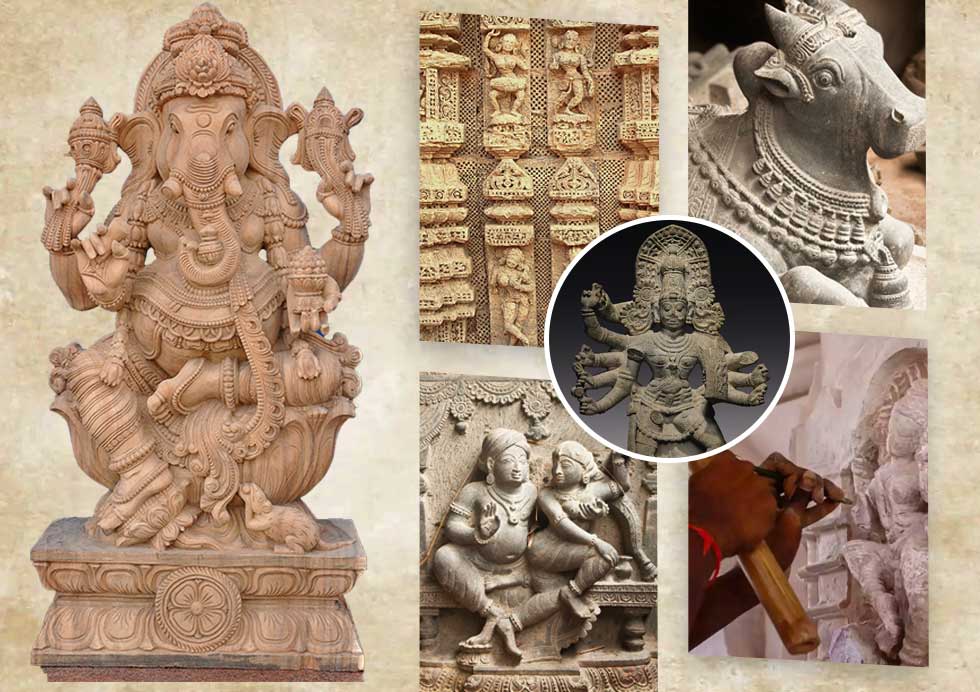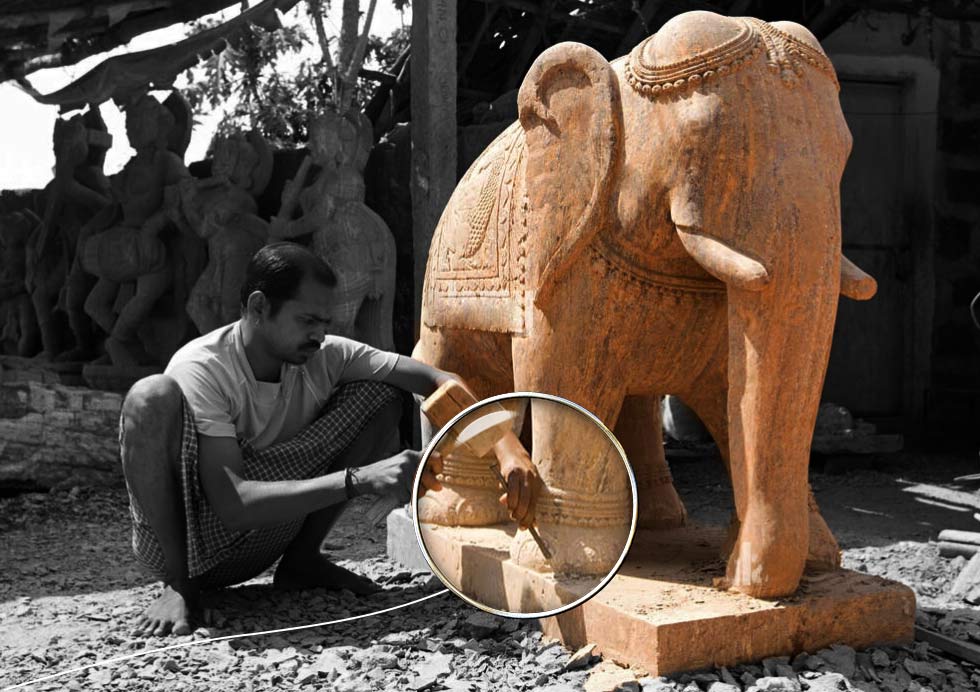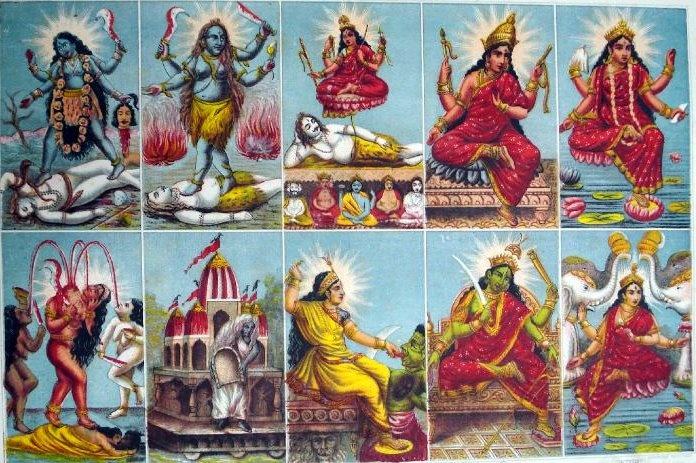Indian stone carving art sculptures are indeed a testament to skill and patience. Sculptors have shown their skills in carving out immortal art of worldwide significance in the rocks, stones, and caves of India. Some sculptures are very old and quite a few have been declared UNESCO World Heritage Sites, in the hope that these excellent creations will be preserved for future generations.
The art of stone carving in Indian sculptures truly showcases the remarkable skill, craftsmanship, and patience of the dedicated artists involved. India boasts an ancient and vibrant tradition of sculptural art that spans thousands of years, with stone serving as a predominant medium for crafting breathtaking sculptures.
The art of stone carving in India has its roots in ancient times, including the Mauryas, Guptas, Cholas, and regional dynasties, enriching its legacy. This art form has seamlessly integrated into temple architecture, and religious iconography, and enjoyed the generous patronage of royalty throughout history. The enduring beauty and cultural significance of these stone sculptures continue to inspire awe and reverence to this day.
The Artistry of Stone Carving Commences with A Crucial Step
The careful selection of the perfect stone. Among the variety of stones available, like marble, granite, sandstone, and soapstone, each is chosen based on its distinct qualities and the desired end result. With the ideal stone chosen, the artist’s creative journey begins by envisioning the sculpture’s form and marking its outlines on the stone block, setting the foundation for the intricate work of transforming raw stone into a breathtaking masterpiece.
Next, the rough shaping of the sculpture begins. Artists use large chisels, hammers, and other tools to remove excess stone and create the basic form. Afterward, they enter the refining stage, where they employ smaller tools like chisels, rasps, and files to bring out intricate details and contours. The artist carefully carves intricate designs, figures, and expressions, paying close attention to proportions, symmetry, and aesthetics.
One of the remarkable aspects of stone carving in Indian sculptures is the level of detail achieved. The artists showcase their mastery by carving delicate jewelry, intricate clothing folds, lifelike facial features, and expressive postures. The sculptures often depict gods, goddesses, mythological figures, and scenes from religious texts, reflecting the spiritual and cultural beliefs of the time.
The process of stone carving demands a profound level of patience and unwavering concentration. Creating one sculpture can take weeks, months, or even a year to complete, depending on the sculpture’s size and intricacy. The artists involved must possess exceptional skills and expertise in comprehending the unique properties of various stones, as each stone behaves differently and necessitates specific carving techniques to bring out its full potential. The combination of skill, artistry, and knowledge makes the art of stone carving a true testament to human creativity and dedication.
Stone Carving in Indian Sculptures
Stone carving in Indian sculptures also involves a deep understanding of iconography, mythology, and symbolism. The artists incorporate symbolic elements and gestures that convey specific meanings and narratives. These sculptures not only serve as objects of aesthetic beauty but also hold religious and cultural significance.
Even in modern times, the art of stone carving in Indian sculptures remains vibrant and thriving. Skilled artisans diligently pass down their invaluable knowledge and intricate techniques from one generation to another. This cherished art form receives well-deserved recognition and admiration, not only within India but also on a global scale, owing to its breathtaking craftsmanship and timeless allure.
The Multifaceted Artistry of Stone Carving in Indian Sculptures

Regional Styles
India is a vast country with diverse cultures and traditions, and each region has its distinctive style of stone carving. For example, the intricate and detailed carvings of the temples in Khajuraho, the colossal sculptures of Ellora and Elephanta Caves, and the majestic monolithic statues of Karnataka showcase the regional variations and artistic nuances.
Spiritual and Devotional Significance
Stone sculptures in India hold profound spiritual and devotional significance. They are intricately crafted to portray deities, saints, and enlightened beings, and are held in utmost reverence as objects of worship within temples and shrines. The exquisite carvings serve as a powerful medium through which devotees can forge a connection with the divine, allowing them to experience a sense of transcendence and spiritual elevation.
Preservation of Heritage
Stone carving in Indian sculptures serves not only as an exquisite art form but also as a crucial guardian of cultural heritage. Numerous ancient sculptures have endured the passage of time, offering invaluable glimpses into the historical, religious, and societal facets of the civilizations that brought them to life. As custodians of this rich past, conservation efforts are diligently undertaken to safeguard these sculptures from the effects of weathering, erosion, and potential human damage.
Influence on Architecture
Stone sculptures have left an indelible mark on Indian architecture, exerting a profound influence on the nation’s structural wonders. Elaborate carvings grace the facades, pillars, and ceilings of temples, palaces, and various architectural marvels. Beyond their sheer aesthetic appeal, these intricately crafted details serve as storytellers, recounting tales from mythology and vividly portraying the social and cultural life of the era they represent. As a result, Indian architecture stands as a captivating testament to the artistic legacy and rich heritage woven into every stone sculpture.
Evolution of Techniques
Over centuries, stone carving techniques in India have evolved and refined. Artists have developed specialized tools, such as pointed chisels, curved gouges, and abrasive stones, to achieve intricate details and smooth finishes. The use of advanced machinery and technology has also made certain processes more efficient, while still preserving the essence of traditional craftsmanship.
Symbolism and Narrative
Stone sculptures often incorporate symbolic elements and tell stories through their intricate carvings. Each posture, gesture, and expression convey a specific meaning or narrative. The sculptures serve as visual aids for religious teachings and mythological tales, enabling viewers to engage with the stories and teachings in a tangible and immersive manner.
Contemporary Stone Carving
While the traditional art of stone carving continues to be practiced, there is also a contemporary movement where artists blend traditional techniques with modern aesthetics. This fusion of styles creates unique and innovative sculptures that reflect evolving artistic sensibilities while maintaining a connection to the rich heritage of Indian stone carving.
The art of stone carving in Indian sculptures is a true testament to the skill, patience, and artistic vision of the craftsmen. It not only showcases artistic excellence but also represents the cultural, spiritual, and historical tapestry of India.



